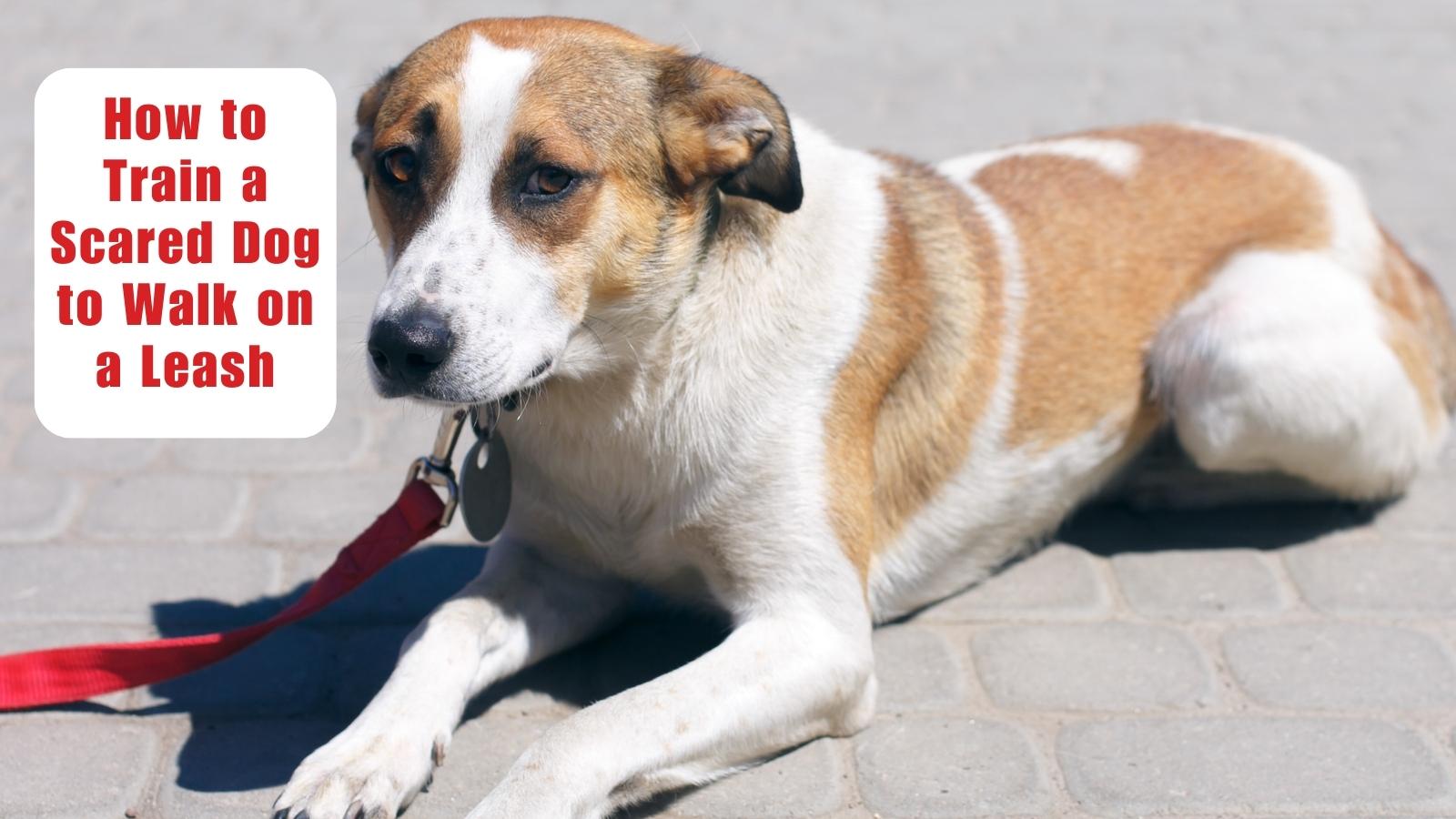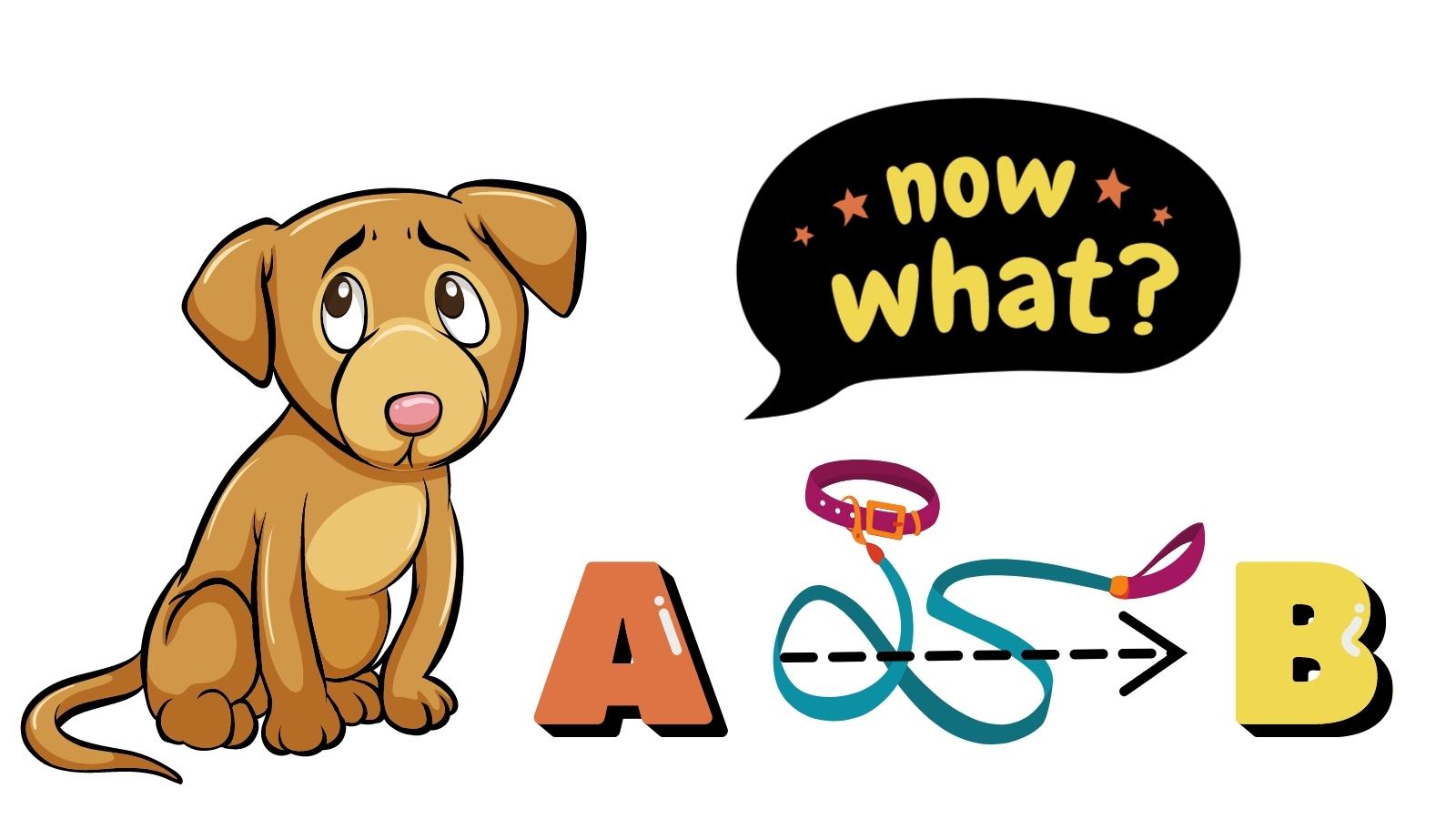Google Adsense—>

Dog Shuts Down on Leash

Today’s dog behavior blog and video is actually based on a request from one of my private Patreon members. If you want to learn more about my Patreon group and how you can also provide input in my upcoming content, you can check it out here.
When you brought your dog home, you may have envisioned a life of traveling, exploring, and going to parks on great sniffy walks. Unfortunately, your dog freaks out on his leash and harness. Or he may freeze and shut down. Your dog, puppy, or rescue dog may be terrified of the leash. When you bring out his dog harness and leash, he goes into a panic, may flatten like a pancake or run away and hide.
Why is My Dog Scared to Walk on a Leash?
There are a variety of reasons why a dog may be afraid of leashes. The lack of positive leash and dog walking experiences is a big one. In other words, something scary happened to your dog when on his leash. Maybe you were out and about, and he was traumatized by an event. Or, you use less-than-positive training methods. Both of these situations can lead to a dog who is fearful of his leash or going for walks.
Lack of leash experience is another reason a dog may be afraid of the leash. This is particularly true for puppies and rescued dogs. Their first experience with a leash may be frighting because it stops them from moving to or away from something the way they would like due to the leash being tight.
Watch this article on YouTube. Don’t forget to subscribe.
How to Train a Dog Who is Afraid of the Leash
Today I want to teach you how to slowly get your dog comfortable with his leash and harness. It’s important to remember, if your dog has some underlying dog anxiety, do make sure you’re addressing that too because a lot of times when a dog is nervous about something like the harness and leash, they may have other issues that need to be addressed as well.
First, if you’re able to ditch your dog’s current harness and leash and start with a new one, go ahead and do that. The set you are currently using has some negative associations and does have a smell, and we know how much that smell means to a dog. If you have the opportunity to start from scratch, you might have quicker results. If not, no worries, but the training may go a tad slower.
Next, keep your dog’s harness and leash out in plain sight. Instead of putting it away, consider leaving it out in the living room. Maybe place it on the end table or on your fireplace ledge or even on the floor. This will allow the object to “live” in the environment, and your dog can slowly start to desensitize to the leash and learn it’s not always moving toward him.
You do want to make sure your dog’s not going to chew it up or get tangled in it. Also, remember your dog thinks it’s scary, so don’t have the leash mentally blocking your dog from going from point A to B. You may need to play around with the location to find one that is just right.

Once you have found the perfect spot for your dog’s harness and leash to live, the next thing you can do is randomly toss some treats around them. Make a large circle of treats around the leash and harness. DON’T try to get your dog to engage. Allow him to do what he wants, when he wants. Your dog doesn’t even have to see you place the treats around. His nose can find them for him. He may or may not go up to investigate it and eat the treats. That’s his decision.
Play it by ear and see what happens. All you’re trying to do is teach your dog this isn’t going to come and attack you and that this means good things. Harness/Leash=Rewards This is counterconditioning your dog. Changing his mind from thinking of it as something scary to something that equals rewards and feeling good.
Next, it’s time to move one of the pieces of equipment. Let’s take the leash as an example. When your dog is just bopping around doing his own thing (not interacting with the leash), go up to the leash, pick it up and set it down, and say, YES! Then toss your dog a very high-value dog treat.
What you’re doing is slowly conditioning your dog that the movement of this leash is something good. It’s not going to come to you and snap around your collar and be scary. Slow and steady always wins the race. Do this a couple of times a day for three days.
On day four, it’s time to make it a bit more challenging. This time, pick up the leash and jingle it a bit, then say, YES! And toss that treat. Over the next week, do slightly different things with your dog’s leash. Maybe you pick it up and drop your hand down while holding it. Still, YES! and treating after each repetition. You are going to repeat this training procedure with your dog’s harness, too. Make sure you also click the harness shut and reward, so your dog can get used to that sound.
Be careful not to move the leash toward your dog, not just yet. If, at any time during your dog’s training he seems nervous, back off and make things easier. Remember, the goal is to have your dog look forward to these training sessions. Leash=Good
Watch me demonstrate with Dexter. The video will start with the demo.
After your dog is fully comfortable, and possibly eager, when you are lifting his harness or leash, the next step is to slowly start to move toward him with the equipment.
Sit on the floor with the harness and leash next to you. Lift it up, YES! and treat. Repeat. Next, lift it up and slowly start to move it toward your dog’s side and shoulder. Don’t touch him with it. Maybe about three feet away, YES! and treat. You will continue this process over the next few days or weeks, depending on how slowly your dog needs you to go. And, hey. Some dogs will actually move through the training quickly—you just need to follow your dog’s pace.
Build on this behavior in small steps, getting closer to the point where you are touching your dog’s side with his harness. The next step, in goes the head.
Take a handful of tasty food treats and reach into the harness where your dog’s head will go through. Give your dog a treat from your hand that is outside the harness. As he’s eating the treat, move the harness over his head and onto his neck, treating your dog again. Continue giving your dog treats from your hand as you take the harness off. Note, you are only slipping your dog’s head through the harness, not his legs. As with all your previous exercises, repeat this process over the next few days.
Next, when your slip your dog’s harness over his head, allow the harness to rest on his neck while continuing to feed him treats. Once he’s comfortable with that, slowly put his legs through the harness, rewarding him through all your dog’s new sessions. When you click the harness shut, reward your dog for that noise. Again, you may take anywhere from one session to a couple of weeks.
How to Train a Scared Dog to Walk on a Leash
Once your dog is happy and comfortable with the harness and leash on, it’s time to work on walking with your dog on the leash. Indoors, away from distractions. You won’t want to have pressure applied to his harness or leash—you want to keep it loose.
While your dog is in his harness and leash, hold the leash and treat your dog. Take a step backward and encourage your dog to come to you. Reward for this step he takes. Continue this process as your dog builds up his confidence in walking to you while on his leash.
In another session, with your dog in his harness and leash, drop a treat on the ground and allow your dog to eat it. As he’s eating it, take a step away from him. He’ll likely move toward you in anticipation of another treat, As he does, drop another treat on the floor. Repeating this process as steps to you, treat, you step back, he steps to you, treat, repeat.
Over time, your dog will continue to look forward to his leash lessons. Remember, you are teaching him. This is a fun game, not something to be leery of. Continue to build on this behavior until you and your dog are walking happily around your house for a few days. Then, you start the walking process again outdoors.
dog afraid of leash and harness, how to train a scared dog to walk on a leash, rescue dog terrified of leash, dog freaks out on leash, dog freezes on leash, how to train a dog that’s never been on a leash, dog shuts down on leash,
Your questions or comments are welcome below.
Are you looking for even more ways to stay up to date with Raising Your Pets Naturally? Sign up for the newsletter for more tips and promotions. Don’t forget to be social and Like, Follow and Subscribe. Comments below are always welcome.
Facebook Twitter Pinterest Instagram YouTube
 |

Google Adsense—>




